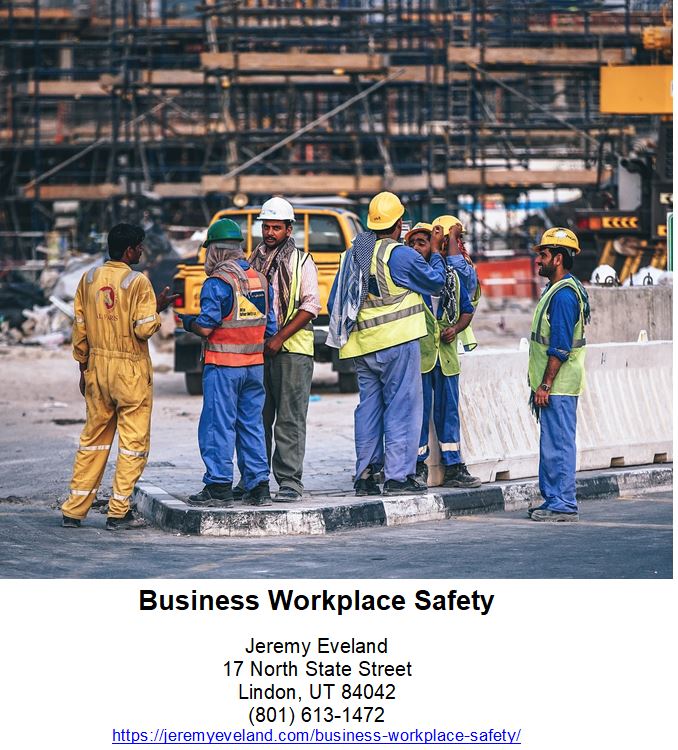-
Attorney at Law
“Unlock Your Potential with Management Consulting”
Introduction
Management consulting is a professional service that helps organizations improve their performance and operations. It involves the analysis of existing organizational problems and the development of plans for improvement. Management consultants provide advice and assistance to organizations in areas such as strategy, operations, finance, human resources, and information technology. They also help organizations develop new products and services, and improve existing ones. Management consultants are often hired to provide objective advice and expertise to help organizations make better decisions and achieve their goals.
The Benefits of Hiring a Management Consultant
Hiring a management consultant can be a great way to improve the efficiency and effectiveness of your business. Management consultants are experienced professionals who specialize in helping organizations identify and address their most pressing challenges. They can provide valuable insights and advice on a wide range of topics, from strategic planning to operational efficiency. Here are some of the key benefits of hiring a management consultant:
1. Expertise: Management consultants bring a wealth of knowledge and experience to the table. They have a deep understanding of the industry and can provide valuable insights and advice on how to improve your business.
2. Objectivity: Management consultants are not emotionally invested in the organization, so they can provide an unbiased perspective on the challenges and opportunities facing the business.
3. Cost Savings: Hiring a management consultant can be more cost-effective than hiring a full-time employee. Consultants are typically hired on a project basis, so you only pay for the services you need.
4. Efficiency: Management consultants can help you identify and address inefficiencies in your operations. They can help you streamline processes, reduce costs, and improve productivity.
5. Innovation: Management consultants can help you identify new opportunities and develop innovative solutions to address your challenges.
Overall, hiring a management consultant can be a great way to improve the efficiency and effectiveness of your business. With their expertise, objectivity, cost savings, efficiency, and innovation, management consultants can help you take your business to the next level.
How to Choose the Right Management Consultant for Your Business
Choosing the right management consultant for your business is an important decision that can have a significant impact on the success of your organization. A management consultant can provide valuable insights and advice to help you make better decisions and improve your operations. However, it is important to select a consultant who is well-suited to your specific needs and goals. Here are some tips to help you choose the right management consultant for your business.
1. Identify Your Needs: Before you begin your search for a management consultant, it is important to identify your specific needs and goals. Consider the areas of your business that need improvement and the type of advice or guidance you are looking for. This will help you narrow down your search and ensure that you select a consultant who is well-suited to your needs.
2. Research Potential Consultants: Once you have identified your needs, it is time to start researching potential consultants. Look for consultants who have experience in the areas you need help with and read reviews from past clients. This will help you get a better understanding of the consultant’s skills and expertise.
3. Ask for Referrals: Ask your colleagues, friends, and family for referrals to management consultants they have worked with in the past. This can be a great way to find a consultant who is well-suited to your needs and has a proven track record of success.
4. Interview Potential Consultants: Once you have identified a few potential consultants, it is important to interview them to get a better understanding of their skills and experience. Ask questions about their approach to problem-solving and their past successes. This will help you determine if the consultant is a good fit for your business.
5. Consider Cost: Cost is an important factor to consider when selecting a management consultant. Make sure to get quotes from multiple consultants and compare their rates. This will help you find a consultant who is within your budget and can provide the services you need.
By following these tips, you can ensure that you select the right management consultant for your business. With the right consultant, you can get the advice and guidance you need to make better decisions and improve your operations.
The Role of Technology in Management Consulting
Technology has become an integral part of management consulting. It has enabled consultants to provide more efficient and effective services to their clients. Technology has enabled consultants to access and analyze data more quickly and accurately, allowing them to make better decisions and provide more comprehensive advice.
Technology has also enabled consultants to collaborate more effectively with their clients. Through the use of cloud-based tools, consultants can share documents, data, and other resources with their clients in real-time. This allows for more efficient communication and collaboration, which can lead to better results.
Technology has also enabled consultants to automate certain processes. This can help to reduce costs and improve efficiency. Automation can also help to reduce the amount of time spent on mundane tasks, allowing consultants to focus on more important tasks.
Technology has also enabled consultants to access a wider range of data and information. This can help them to make more informed decisions and provide more comprehensive advice. Technology has also enabled consultants to access a wider range of resources, such as research papers, industry reports, and other materials.
Finally, technology has enabled consultants to provide more personalized services to their clients. Through the use of artificial intelligence and machine learning, consultants can tailor their advice to the specific needs of their clients. This can help to ensure that the advice they provide is more effective and relevant.
In conclusion, technology has become an essential part of management consulting. It has enabled consultants to provide more efficient and effective services to their clients. Technology has also enabled consultants to access a wider range of data and resources, collaborate more effectively with their clients, automate certain processes, and provide more personalized services.
The Impact of Management Consulting on Business Performance
Management consulting is a rapidly growing industry that has become an integral part of the business world. It is a service that provides advice and assistance to organizations in order to help them improve their performance. Management consultants are experts in their field and can provide valuable insights and advice to help organizations reach their goals.
The impact of management consulting on business performance is significant. Management consultants can help organizations identify areas of improvement, develop strategies to address those areas, and implement those strategies. They can also provide guidance on how to best utilize resources, develop effective processes, and create a culture of innovation.
Management consultants can also help organizations identify and address potential risks. They can provide advice on how to mitigate risks and develop strategies to reduce their impact. This can help organizations avoid costly mistakes and ensure that their operations are running smoothly.
Management consultants can also help organizations develop and implement effective marketing strategies. They can provide advice on how to best reach target audiences, develop effective campaigns, and measure the success of those campaigns. This can help organizations increase their visibility and reach more potential customers.
Finally, management consultants can help organizations develop and implement effective organizational structures. They can provide advice on how to best organize teams, create efficient processes, and develop effective communication systems. This can help organizations become more efficient and productive.
In conclusion, the impact of management consulting on business performance is significant. Management consultants can provide valuable insights and advice to help organizations reach their goals. They can help organizations identify areas of improvement, develop strategies to address those areas, and implement those strategies. They can also provide guidance on how to best utilize resources, develop effective processes, and create a culture of innovation. Finally, they can help organizations develop and implement effective marketing strategies and organizational structures.
The Challenges of Implementing Management Consulting Solutions
Management consulting solutions can be a powerful tool for organizations looking to improve their operations and increase their profitability. However, implementing these solutions can be a challenging process. This article will discuss some of the common challenges associated with implementing management consulting solutions.
First, there is the challenge of getting buy-in from stakeholders. Management consulting solutions often require significant changes to existing processes and systems, and these changes can be difficult to implement without the support of key stakeholders. It is important to ensure that stakeholders understand the value of the proposed solutions and are willing to commit to the necessary changes.
Second, there is the challenge of ensuring that the solutions are implemented correctly. Management consulting solutions are often complex and require careful implementation to ensure that they are effective. It is important to ensure that the solutions are implemented in a way that is consistent with the organization’s goals and objectives.
Third, there is the challenge of ensuring that the solutions are sustainable. Management consulting solutions are often designed to provide short-term benefits, but it is important to ensure that the solutions are sustainable in the long-term. This requires careful planning and monitoring to ensure that the solutions are effective and that any changes are made in a timely manner.
Finally, there is the challenge of measuring the success of the solutions. It is important to ensure that the solutions are achieving the desired results and that any changes are having a positive impact on the organization. This requires careful monitoring and evaluation to ensure that the solutions are having the desired effect.
In conclusion, implementing management consulting solutions can be a challenging process. It is important to ensure that stakeholders are on board with the proposed solutions, that the solutions are implemented correctly, that they are sustainable in the long-term, and that their success is measured. By addressing these challenges, organizations can ensure that their management consulting solutions are effective and successful.
Q&A
Q1: What is Management Consulting?
A1: Management consulting is a professional service that provides advice and assistance to businesses and organizations to help them improve their performance and operations. It involves analyzing a company’s operations, identifying areas of improvement, and developing strategies to help the company reach its goals.
Q2: What types of services do Management Consultants provide?
A2: Management consultants provide a wide range of services, including strategic planning, organizational design, process improvement, financial analysis, market research, and more.
Q3: What qualifications do Management Consultants need?
A3: Management consultants typically need a bachelor’s degree in business, economics, or a related field. Many consultants also have an MBA or other advanced degree. In addition, many consultants have specialized certifications or experience in a particular industry or area of expertise.
Q4: What is the job outlook for Management Consultants?
A4: The job outlook for management consultants is positive. According to the Bureau of Labor Statistics, employment of management consultants is projected to grow 11 percent from 2019 to 2029, much faster than the average for all occupations.
Q5: What are the benefits of working as a Management Consultant?
A5: Working as a management consultant can be a rewarding and lucrative career. Consultants have the opportunity to work with a variety of clients and industries, and they can often set their own hours and work from home. Additionally, consultants can often earn a higher salary than other professionals in the same field.
Management Consulting Consultation
When you need help with Management Consulting call Jeremy D. Eveland, MBA, JD (801) 613-1472 for a consultation.
Jeremy Eveland
17 North State Street
Lindon UT 84042
(801) 613-1472
Related Posts
Business Succession Lawyer Bountiful Utah
Concrete Pumping Business Lawyer



